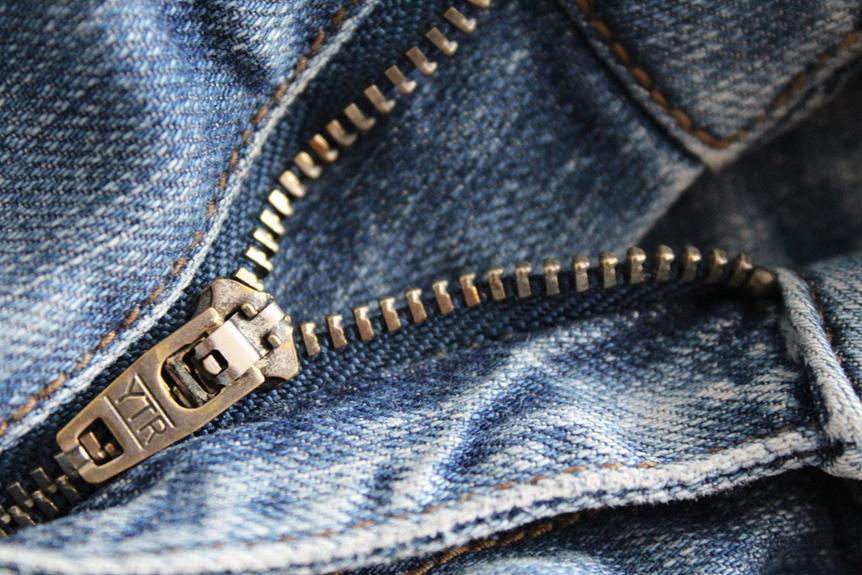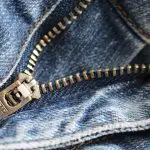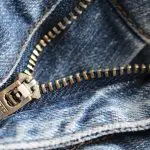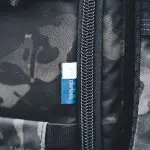You may wonder if zipper glides are truly necessary for smooth fabric function. While it's true that well-made zippers can function without glides, understanding the impact of zipper glides on fabric smoothness is essential for mastering garment construction.
The role of zipper glides in ensuring effortless opening and closing, as well as their impact on different fabric types, is crucial knowledge for achieving impeccable garment functionality.
In this exploration, we will objectively examine the necessity of zipper glides for smooth fabric function, weighing the pros and cons and considering alternative solutions.
By the end, you will have a comprehensive understanding of the role of zipper glides in achieving smooth fabric function and be equipped to make informed decisions in garment construction.
Key Takeaways
- Zipper glides are essential for maintaining the smooth function of fabric when using zippers.
- The choice of glide material affects the durability and longevity of zippers.
- Zipper glides play a crucial role in preventing snags and ensuring seamless interlocking of zipper teeth.
- Matching the right glide material with the fabric type enhances zipper performance and longevity.
The Function of Zipper Glides
If you've ever wondered how zipper glides contribute to the smooth functioning of fabric zippers, it's important to understand their crucial role in preventing snags and maintaining ease of use. Zipper glide materials, particularly metal and plastic, play a significant role in the durability and functionality of zippers. The glide ensures that the teeth of the zipper interlock seamlessly, allowing for effortless opening and closing. Additionally, the choice of material for the glide affects the overall sturdiness and longevity of the zipper, as it directly influences how well the zipper will withstand repeated use and potential stress.
In contrast, glideless zippers, which lack the traditional zipper glides, often rely on alternative closure methods such as snaps, buttons, or hook-and-loop fasteners. While these alternatives may offer some functionality, they don't provide the same level of smooth and consistent operation as zippers with glides. Furthermore, the absence of glides can lead to increased instances of snagging and difficulty in aligning and fastening the zipper teeth.
Understanding the function of zipper glides and their impact on the smooth functioning of fabric zippers is essential for ensuring the reliability and convenience of zippered closures.
Pros and Cons of Zipper Glides
Considering the advantages and disadvantages of zipper glides can help you make informed decisions when choosing zippers for your fabric products.
- Pros
- Enhanced Fabric Compatibility: Zipper glides can help prevent fabric snags and tears, especially with delicate materials like silk or lace.
- Easy Maintenance: Zipper glides can be replaced if damaged, offering a cost-effective solution compared to replacing the entire zipper.
- Durability: They can prolong the lifespan of zippers by reducing wear and tear on the teeth, ensuring smooth functionality over time.
- Fashion Trends: Zipper glides offer opportunities for customization and style, with various designs and finishes available to complement different fashion trends.
- Cons
- Potential Malfunction: Zipper glides can sometimes get stuck or break, leading to difficulties in opening or closing the zipper.
- Added Weight: In some cases, zipper glides can add extra weight to the zipper, which may not be suitable for lightweight or minimalist designs.
- Maintenance: While they offer easy maintenance, zipper glides still require periodic attention to ensure they're functioning correctly.
- Fabric Compatibility: Some fabrics may not work well with certain types of zipper glides, leading to friction or damage to the material.
Zipper Glides Vs. Fabric Type
When considering the impact of zipper glides on fabric, it's essential to take into account the compatibility of different fabric types.
Certain fabrics may be more prone to snagging or friction, making the presence of zipper glides more crucial for smooth functionality.
Understanding how zipper glides interact with specific fabric types can help you make informed decisions for achieving optimal zipper performance.
Zipper Glide Impact
When choosing zipper glides, consider the impact of different fabric types on their smooth function. Zipper glide efficiency is influenced by the fabric's performance, so it's essential to select the right glide material to ensure optimal zipper function.
Factors such as fabric thickness, texture, and stretchiness can affect how smoothly a zipper glide operates, making it crucial to match the glide material with the fabric type.
Consider the following when evaluating the impact of zipper glides on different fabric types:
- Fabric thickness and stiffness
- Fabric texture and weave
- Fabric stretchiness and elasticity
- Fabric abrasiveness and durability
Understanding how these fabric characteristics interact with zipper glides will help you make informed decisions when selecting the most suitable zipper glide for your specific fabric type.
Fabric Compatibility Considerations
Selecting the appropriate zipper glide for your specific fabric type is crucial for ensuring smooth functionality. Fabric compatibility is an essential consideration when choosing zipper glides to guarantee smooth movement.
Different fabric types, such as delicate silk or heavyweight denim, require specific zipper glides to prevent snagging or sticking. For instance, lightweight fabrics like chiffon or organza may benefit from finer, smaller zipper glides, while sturdier materials like canvas or denim may require larger, more robust zipper glides to accommodate their thickness.
Understanding the characteristics of your fabric and matching them with the right zipper glide can significantly impact the overall performance and longevity of your zipper. By carefully considering fabric compatibility, you can ensure that your zippers operate seamlessly, enhancing the functionality and durability of your garments or accessories.
Impact of Zipper Glides on Smoothness
Zipper glides play a crucial role in ensuring smooth fabric movement, impacting the overall functionality of the zipper. Understanding the functionality and importance of zipper glides will shed light on their impact on the smoothness of fabric function.
It's essential to consider the role of zipper glides in achieving seamless fabric movement for a comprehensive understanding of their impact.
Zipper Glide Functionality
Once you understand how zipper glides function, you can appreciate their impact on the smoothness of fabric movement. The zipper glide efficiency directly affects the fabric quality as it determines how smoothly the zipper opens and closes, preventing snags and tears.
Innovative zipper glides contribute to improved fabric functionality by allowing for easier and more precise maneuvering, enhancing the overall user experience. Factors such as the design of the glide and the materials used in its construction play a crucial role in determining the level of smoothness achieved during operation.
Additionally, the incorporation of advanced technologies in zipper glide manufacturing can further elevate the functionality of zippers, ensuring seamless fabric movement.
Smooth Fabric Movement
To achieve smooth fabric movement, ensure that the zipper glides are crafted with precision and utilize advanced materials. The functionality of zipper glides directly impacts the smoothness of fabric movement. When zipper glides are designed with precision, they reduce friction and enable seamless opening and closing of zippers, resulting in smooth functionality. Advanced materials such as Teflon coatings or high-quality plastics further enhance the gliding action, promoting effortless fabric movement. A well-designed zipper glide contributes to the overall user experience by ensuring that the fabric moves without any snags or disruptions. By prioritizing the quality of zipper glides, you can significantly enhance the smoothness of fabric movement, making it easier to use zippers on various garments and accessories.
| Zipper Glide Material | Impact on Smooth Fabric Movement |
|---|---|
| Teflon coating | Reduces friction for seamless movement |
| High-quality plastics | Enhances gliding action for effortless use |
| Precision craftsmanship | Promotes smooth functionality |
| Advanced materials | Contributes to seamless fabric movement |
| Quality design | Ensures smooth fabric functionality |
Importance of Glides
You can appreciate the importance of zipper glides by considering their direct impact on the smoothness of fabric movement. The design innovation of zipper glides plays a crucial role in ensuring seamless functionality and enhancing the user experience.
- Enhanced Durability: Zipper glides contribute to the overall durability of the zipper by reducing friction and wear on the fabric.
- Ease of Operation: The incorporation of well-designed glides allows for effortless opening and closing of the zipper, promoting convenience and user satisfaction.
- Prevention of Snags: Properly functioning glides help prevent fabric snags, maintaining the integrity of the material and preserving its smoothness.
- Improved Aesthetics: Well-designed zipper glides contribute to the overall visual appeal of the garment or item, enhancing its quality and perceived value.
Alternatives to Zipper Glides
When looking for alternatives to zipper glides, consider using lubricants specifically designed for zippers to ensure smooth fabric function. These lubricants provide an effective solution for zipper maintenance, ensuring that the zipper teeth move seamlessly and the fabric glides without any friction. By applying a small amount of zipper lubricant along the teeth and the zipper tape, you can significantly improve the smoothness of zipper movement without the need for traditional glides. This alternative solution not only enhances fabric movement but also minimizes the impact on smoothness caused by worn-out or damaged zipper glides.
Another alternative to zipper glides is using wax as a lubricant. Wax can be applied to the zipper teeth to reduce the friction and improve the overall functionality of the zipper.
Additionally, replacing damaged or worn-out zipper glides with new ones can also restore smooth fabric function. Proper maintenance and regular cleaning of zippers can also contribute to smoother fabric movement, reducing the reliance on glides for achieving optimal performance.
Consider these alternatives to zipper glides to ensure that your zippers operate smoothly and effectively.
Maintenance of Zipper Glides
Regular maintenance of zipper glides is essential for ensuring smooth and efficient fabric function. To keep your zipper glides in optimal condition, follow these key maintenance tips:
- Regular Cleaning: Use a soft brush or cloth to remove any dirt, debris, or lint that may have accumulated in the zipper teeth or glides. This helps prevent friction and ensures smooth operation.
- Glide Lubrication: Apply a small amount of zipper lubricant or a silicone-based lubricant to the zipper glides. This helps reduce friction and keeps the glides moving smoothly along the zipper track.
- Inspect for Damage: Regularly inspect the zipper glides for any signs of damage, such as bent or broken teeth, which can impede smooth operation. Replace damaged glides promptly to maintain optimal functionality.
- Gentle Operation: When using the zipper, do so with care and avoid forcing the glides. Gentle and even pressure can help prolong the life of the zipper glides and maintain their smooth function.
Zipper Glides and Fabric Durability
To maintain the durability of your fabric, ensuring the smooth operation of zipper glides is crucial. Zipper glide impact plays a significant role in fabric movement efficiency. When the zipper glides smoothly along the teeth, it reduces the stress on the fabric, preventing tears and fraying. A poorly functioning zipper glide can snag and pull at the fabric, causing damage over time. This is particularly important for delicate or fine fabrics where any extra strain can lead to permanent damage.
Properly functioning zipper glides also contribute to the overall longevity of the fabric. When the zipper operates smoothly, it reduces the need for excessive tugging and pulling, which can weaken the fabric over time. By minimizing unnecessary stress on the fabric, the garment or item can maintain its integrity and appearance for a longer period.
Future of Zipper Glides in Fashion
Maximizing the efficiency of zipper glides in fashion is essential for enhancing fabric functionality and garment aesthetics. As fashion trends continue to evolve, the future of zipper glides is poised to play a significant role in sustainable fashion and overall garment design.
- Innovative Materials: The future of zipper glides in fashion will likely involve the use of innovative, sustainable materials that align with eco-friendly initiatives in the industry.
- Functional Design Integration: Zipper glides are expected to be seamlessly integrated into garment designs, ensuring both functionality and aesthetic appeal.
- Customization and Personalization: Future trends may see zipper glides being used as customizable elements, allowing for personalization and unique style expression.
- Emphasis on Durability and Longevity: With a focus on sustainable fashion, zipper glides are anticipated to be designed for longevity, contributing to the durability of garments and reducing waste.
The future of zipper glides in fashion is intertwined with sustainability, innovation, and consumer preferences. With an emphasis on eco-friendly practices, functional design integration, and personalized fashion, zipper glides are poised to continue shaping the future of fashion trends and garment construction.
Frequently Asked Questions
How Do Zipper Glides Affect the Overall Aesthetic of a Garment?
When considering the overall aesthetic impact of a garment, zipper glides play a crucial role. They not only enhance the functionality of the fabric but also contribute to the visual appeal and the smoothness of the garment's appearance.
Are There Any Environmental Considerations Related to the Use of Zipper Glides?
Consider the environmental impact of zipper glides. Sustainable measures, like using recycled materials or opting for non-metallic alternatives, can reduce the ecological footprint. Evaluate the end-of-life disposal options to make informed choices.
Can Zipper Glides Be Added to Existing Garments, or Are They Only Incorporated During the Manufacturing Process?
Yes, zipper glides can be added to existing garments. However, they are primarily incorporated during the manufacturing process. When adding glides, consider environmental impact, health concerns, cost of production, and aesthetic impact on zipper function.
Are There Any Potential Health or Safety Concerns Related to Zipper Glides?
Potential concerns related to zipper glides include safety implications such as choking hazards or entanglement risks, especially for children's clothing. It's important to adhere to product regulations and ensure that zipper glides meet safety standards.
Do Zipper Glides Have Any Impact on the Cost of Garment Production?
Zipper glides can impact efficiency in garment production by ensuring smooth zipping, reducing errors, and saving time. This can lead to cost savings through increased productivity and less rework, making them essential for smooth operations.
- Can You Get Organza Wet? - April 23, 2024
- Why Is Organza so Popular? - April 23, 2024
- What Do You Wear With Organza? - April 23, 2024








